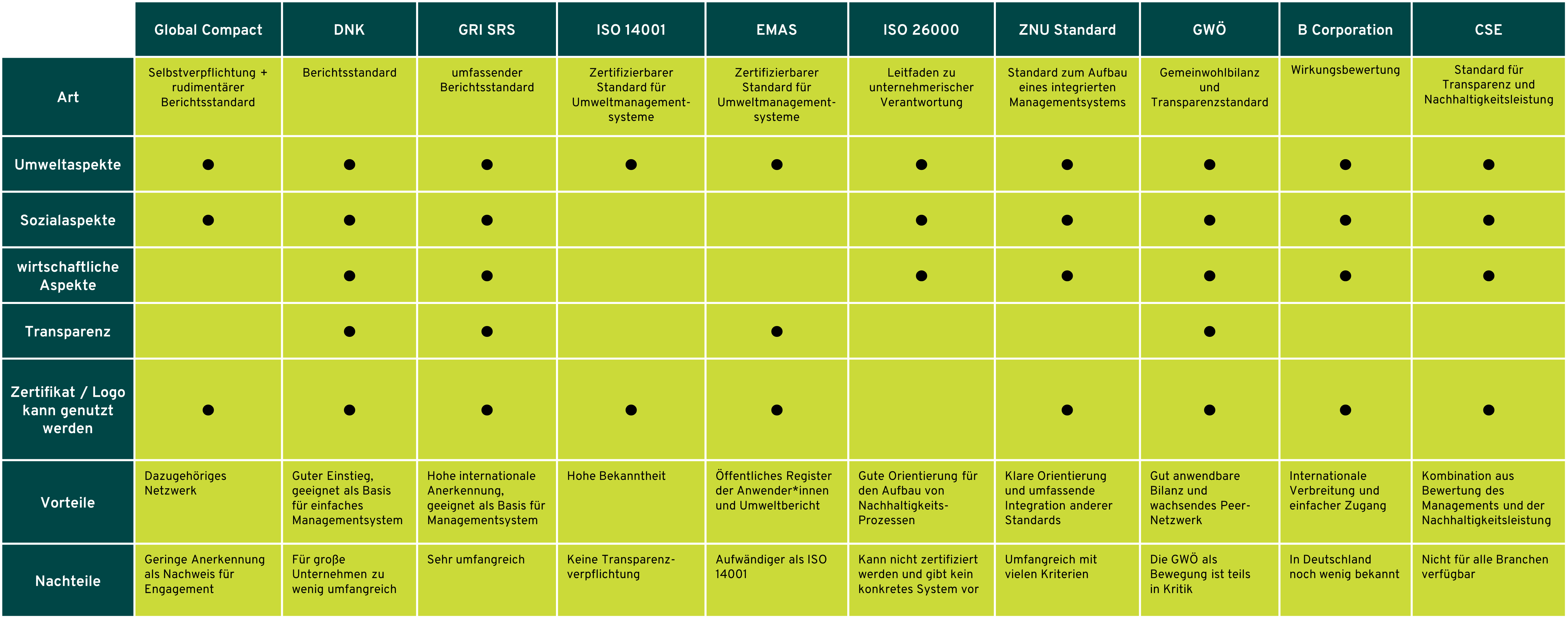There are Sustainability countless seals, certificates and similar proofs. It is difficult for both private individuals and companies to maintain an overview.
We therefore want to use this article to provide companies with guidance on which seals and certificates are available and what they are suitable for. We cannot include all the seals, certificates and proof of sustainability in companies that exist. That's why we show the most common seals, certificates and proofs of sustainability and explain the differences and use cases.
As there are now various ways of "proving" your own sustainability, we have included other forms in addition to clear seals and certificates. For example, membership of certain initiatives or being honoured with awards.
This article is part of our comprehensive guidelines for the development of a sustainability strategy. It should therefore help to create a comprehensive understanding of the possibilities of sustainability in the company.
Contents
- Reference to seals for sustainable products
- Seals and certificates for the entire company
- Industry seal for sustainability
- Seal for selected sustainability topics
- Membership of associations and initiatives
- Prizes and awards for sustainability
- Further evidence
- Overview of all standards, seals and certificates
- Conclusion
1. seal for sustainable products
The range of seals for sustainable products has grown enormously in recent years. In this sense, this refers to seals that provide a statement on the product-specific sustainability performance or the type of production.
For an overview of product seals, we therefore refer you to other sites that enjoy our full trust:
- Seal recommendations from the sustainable shopping basket
- Seal recommendations from the Federal Environment Agency
- Seal overview from the Bielefeld Environmental Centre
Our overview article is about seals and certificates at company level. These are seals that in most cases may not even be displayed on products, but are intended to show the sustainability performance of the entire company.
Methods and best practice for sustainability in your mailbox

2. sustainability seals and certificates for the entire company
Firstly, we want to look at the seals and certificates that consider sustainability throughout the entire company. It is important to understand that this does not objectively reflect a company's sustainability performance, i.e. the sum of its impact on the environment and society. To do this, a comprehensive individual environmental and social balance sheet would have to be drawn up and this is almost impossible to realise with current methods. A few approaches nevertheless attempt to assess the sustainability performance of companies.
This is why these seals and certificates describe company-wide systems (such as management systems) or structures (such as transparent reporting structures) for sustainability.
An additional overview of frameworks (in a slightly different sorting) is provided by the PuNa study by the IASS Potsdam on page 31.
a) Certifications for management systems
Target: Management systems based on a recognised standard are well known to many companies. The aim of these systems is therefore to structure the activities, tools and methods of corporate management with regard to the environment or sustainability in order to achieve sustainability goals.
Advantages and disadvantages: Environmental and sustainability management systems can help companies to obtain detailed information on their sustainability performance. Depending on the size and business model, however, setting up and maintaining such a system can be resource-intensive.
Suitable for: Management systems are suitable for the structured, continuous and comprehensive improvement of sustainability performance and are therefore particularly suitable for larger and often manufacturing companies. If the systems are certified, they are also recognised as proof of environmental or social responsibility, particularly for business customers and partners. Sustainability management.
The systems:
- ISO 14001: The ISO 14001 standard specifies requirements for a Environmentmanagement system and is internationally recognised. Organisations such as TÜV can certify the environmental management system.
- EMAS: The Eco Management and Audit Scheme also serves to establish an environmental management system. It is an EU system and the current version is based on the ISO 14001 on. In addition to ISO 14001, key environmental indicators must be recorded and an environmental report published. If the associated environmental audit is successful, a company may then also be awarded the EMAS-logo.
- ZNU standard: The standard helps to establish a sustainability management system and is therefore more holistic than standards for environmental management systems alone. It was developed at the University of Witten Herdecke and is certified by various bodies such as TÜV and DEKRA. In addition to the introduction of an integrated sustainability management system, it specifies concrete performance requirements for sustainability issues that can be viewed in the public regulations.
- ISO 26000: The ISO 26000 is not a classic management system standard and therefore cannot be certified according to it. Rather, it serves as a guideline for setting up your own sustainability management system in order to fulfil your own responsibilities as a company. In contrast to EMAS and ISO 14001, however, it also includes social and governance aspects.
b) Standards for reporting
Target: As sustainability is a broad field that is sometimes difficult to grasp, we have CSR- and sustainability reporting standards have proven to be an important approach.
They make reports comparable, as they deal with the same topics and follow the same structure. This makes comparisons within a sector, scientific observations or insights for different industries possible. Stakeholders made possible. Furthermore, the tried-and-tested and recognised frameworks make it easier to get started and ensure that relevant topics are covered.
At the latest since the CSR reporting obligation standards have become an important guarantor of legal compliance for the companies concerned.
Advantages and disadvantages: The mere reporting of sustainability aspects does not say much about a company's actual sustainability performance. However, for reputational reasons, a reporting company automatically puts itself under pressure to continuously improve. The standards described vary greatly in scope and level of detail, meaning that the effort required to fulfil them can quickly become considerable.
For whom suitable: In principle, the standards are suitable for communicating sustainability efforts, both through the content and the wearing of the labels. For SMEs, the DNK and for larger companies often the GRI SRS. Both also serve as a substantive basis for sustainability management, as the sustainability aspects and associated performance indicators are comprehensively included.
The standards:
- Global Compact: The GC is a United Nations pact that organisations can join. In doing so, they declare their intention to comply with 10 social and ecological principles and are expected to report their progress on these annually. Participation in the pact is seen more as an expression of goodwill than as transparent reporting.
- DNK: The German Sustainability Code was adopted by the German Sustainable development was initiated. It is intended to provide SMEs in particular with a suitable framework for recording, reporting and improving sustainability performance. It contains 20 criteria and 28 performance indicators on sustainability. It is becoming increasingly widespread in Germany and other European countries are also adapting the standard.
- GRI SRS: The Sustainability Reporting Standard of the Global Reporting Initiative is the most comprehensive standard. It comprises 36 modules and 120 indicators and is therefore primarily used by large or internationally active companies.
c) Seal for sustainability assessment
Target: Some providers have specialised in mapping the sustainability performance of companies in a comparable way. Among other things, this can serve to provide business customers with a standardised statement on sustainability performance.
For whom suitable: The example below is primarily used in international manufacturing companies and is intended to enable the verification of sustainability performance along the supply chain.
The sustainability assessments:
- Ecovadis: The EcoVadis sustainability rating is the most frequently used, particularly in value creation networks. A standardised questionnaire is used to assess relative sustainability performance, which can then be benchmarked against 75,000 companies.
d) Overarching assessment and transparency approaches
Target: Some approaches attempt to combine the various levels of sustainability management, sustainability performance and transparency. This is intended to make it easier for companies to orientate themselves and provide them with a comprehensive tool. Basically, these approaches can also be understood as reporting frameworks, but they supplement the evaluation of sustainability management according to their own criteria.
Advantages and disadvantages: The approaches help some companies enormously to give their sustainability efforts a clear direction. The approaches define their own criteria and prioritisation of sustainability issues. This provides orientation, but can also neglect specific characteristics of a company. Due to their comprehensive approach, however, the approaches are naturally also the subject of controversial debate.
For whom suitable: The approaches are mostly used by small and medium-sized companies. Large companies, on the other hand, tend to set up their own systems. For this reason, both approaches are mainly used by companies that are very committed to sustainability.
The providers:
- GWÖ: The common good balance sheet of the Economy for the common good is an evaluation scheme with 20 indicators and further sub-indicators for each. The matrix is structured in such a way that 5 fixed relevant stakeholder groups are analysed for each of 4 fixed relevant sustainability topics. At the end of the assessment, a score is then given for sustainability performance. In addition, companies often orientate themselves on the content framework of the ECG.
- B Corp: With B Corp, companies receive certification of their sustainability performance following an external audit. The system operates internationally and also awards a score. More and more European companies are using the certificate. Nevertheless, recognition and penetration is still rather low.
- CSE Certified Sustainable Enterprise: The CSE certification was developed by the GfaW (Society for Applied Business Ethics). The standard for certification and the extensive criteria were developed in co-operation with companies from various sectors. Certification is then carried out by an accredited inspection body. The categories of business model/QM system are analysed, Environmental protectionFinance, Supply Chain, Labour and Market & Ethics. The company should also set itself individual sustainability targets. Finally, the certified company can display the CSE label on its products. The standard is not yet available for all sectors, but is already available for many.
An overview of the standards and certifications for sustainability throughout the company

3. industry seal for sustainability
In some sectors, a wide variety of sustainability seals and certificates have emerged. In most of these sectors, however, these are seals for the products or services offered.
We welcome additions from other sectors.
Tourism
- A wide variety of seals have emerged in tourism. Particularly in the case of accommodation and destinations, the criteria for the product are often transferable to the organisation itself. That is why we want to Label guide from fairunterwegs to the most common seals and standards for sustainability in tourism.
Food industry
- We-Care seal: In addition to the countless product seals in the food industry, a relatively new seal for sustainable company and supply chain management has been created. The aim is to introduce a holistic standard that takes into account company practices as well as the supply chain and the products themselves.
Construction industry
- The "Sustainable building quality seal" (QNG) was developed by the Federal Ministry of Building and awarded by accredited bodies. It is intended to ensure the ecological, social and cultural quality of buildings and also shed light on the processes in a holistic manner.
4. seal for selected sustainability topics
Target: Topic-specific standards and certificates can be used to focus more on those topics that are of greater importance to an individual company. This also enables the further professionalisation of performance improvement in this area.
Advantages and disadvantages: The services and structures relating to the selected topics are usually dealt with in more detail than can be the case in overarching approaches. Inevitably, however, the links to other topics and the organisation-wide anchoring of sustainability are not promoted very much.
For whom suitable: The use cases depend on the individual subject areas. Often, certain certificates are required in a specific industry. For example, a certified energy management system in energy-intensive industries or verifiable compliance with labour standards in industries with international supply chains.
a) Energy
- ISO 50001: The ISO 50001 is a standard for setting up an energy management system and can be certified by various bodies. For energy-intensive companies, proof of ISO 50001 certification is sometimes a prerequisite for certain partial tax exemptions.
b) Labour standards
- ILO core labour standards are United Nations conventions designed to ensure decent working conditions and labour protection. All important certifiable labour standards are therefore based on the ILO core labour standards.
- SA8000: SA8000 is a standard that includes requirements for working conditions, health and safety, trade union rights and similar. For companies, SA8000 certification is therefore proof of compliance with these requirements.
- Amfori BSCI is a platform and a programme designed to make it easier for companies to implement labour standards in an international Value chain to secure. BSCI is not certifiable, but the programme enables certification in accordance with SA8000.
- BS OHSAS 18001 is a British and Polish standard for occupational health and safety management systems. However, it is currently being replaced by the international ISO 45001 standard.
- ISO 45001: ISO 45001 is an international standard for occupational health and safety management systems. Companies can be certified in accordance with this standard to prove that they have an effective and efficient occupational health and safety system.
c) Climate protection aspects
- Science Based Targets: Companies can set climate emission reduction targets that make a scientifically sound contribution to the 1.5° target. The STBi reviews these targets and then certifies the company's effective contribution to the climate protection targets.
- Proof of climate neutrality: The providers check companies' carbon footprints, reduction targets and offsetting measures and certify their climate neutrality if they pass the test. Providers include the TÜV associationscompanies such as Climate Partner or NGOs like Wilderness International.
- Climate-neutral events, buildings, services: CO2 balances, reduction targets and offsetting are also reviewed and certified for individual areas of the company.
d) Other individual sustainability aspects
- Sustainable procurement organisation certificateThe BME Federal Association certifies companies if they make voluntary commitments to 9 minimum criteria relating to sustainable procurement, implement them and maintain them for a further year.
- Diversity Charter: By signing the charter, a company makes a voluntary commitment to promote Diversity a. The initiative also runs under the auspices of the Federal Chancellery.
- ISO 27001: ISO 27001 is an international standard for information security management systems. Certification thus certifies that a company has effective security mechanisms for information.
- Alliance for Water Stewardship: An A4WS certificate attests to the responsible water management of a company site. The certificate is awarded in three grades.
5. membership of associations and initiatives
Target: The main aim of membership in associations and initiatives is to support each other on the path to greater sustainability. In some cases, it is also about enabling the representation of interests or demonstrating a voluntary commitment. The aim is not to be able to prove that a company is sustainable. However, as the membership logos are often worn, we would like to present them here. Some organisations also reserve the right to reject members who do not comply with sustainability aspects.
Advantages and disadvantages: Wearing the membership logos is not proof of a sustainable way of working, even if this is not always recognisable to laypeople. However, the great advantage of associations and initiatives is the exchange of experience and the network with other companies that want to become more sustainable.
For whom suitable: Associations and initiatives are suitable for all companies that want to work on their sustainability performance. However, which association is the right one depends on the company's own structure and the objective of its membership.
Associations and initiatives
- B.A.U.M. e.V.: The "Bundesdeutscher Arbeitskreis für umweltbewusstes Management" focuses its own work on the transfer of knowledge and the development of expertise between member companies. By submitting a declaration of intent to comply with the B.A.U.M. Code, a company is authorised to bear the B.A.U.M. logo.
- Federal Association for Sustainable Economy (formerly Unternehmensgrün e.V.): The BNW is an association of companies committed to sustainability. In addition to promoting the exchange of ideas between members and special projects to promote sustainability, it also acts as a lobby group for a sustainable economy in the political arena.
- Foundation 2°: Stiftung 2 Grad is an initiative of board members and managing directors of large and medium-sized German companies. It aims to help achieve the climate target of no more than 2° warming by encouraging companies to make voluntary commitments to reduce emissions and by carrying out political work to decarbonise the economy.
- Climate protection Company is an initiative of various ministries and chambers that aims to promote and publicise best practices and lighthouse projects on climate protection and energy efficiency in companies. To become a member, the company's exemplary measures are scientifically scrutinised according to the initiative.
- Saxon Environmental Alliance and others: Many federal states have environmental alliances that aim to bring together companies that are particularly committed to environmental protection. Companies that can demonstrate concrete improvements in their environmental performance can become members.
- SEND e.V.The Social Entrepreneurship Network Germany aims to bring together social businesses, promote dialogue among them and also advance the goals and interests of social entrepreneurship politically. In addition to the nationwide network, there are now active regional groups in almost all federal states.
6. prizes and awards for sustainability
Target: Prizes and awards are intended to recognise and highlight companies for their special achievements in sustainability. The awards themselves pursue different objectives.
Advantages and disadvantages: Such awards are particularly suitable for intensive communication of a company's own sustainability achievements. In most cases, however, it is also important to note that certain areas of the company, products, plans or projects are honoured and not the company as a whole.
For whom suitable: The application for the award is particularly suitable for companies that have already taken major steps towards sustainability, pursue particularly innovative approaches and can demonstrate outstanding successes.
Prizes and awards
- German CSR Award: With this award, the German government honours examples of outstanding sustainability performance and aims to draw attention to positive examples.
- German Sustainability Award: The German Sustainability Award is a multi-stakeholder project and has been awarding the prestigious prize in 10 categories since 2007.
- Federal Sustainability Award: The German Sustainability Association honours examples of holistic sustainability with this award.
- Ecoprofit: As part of the nationwide Ökoprofit projects, companies usually undergo a one-year process in which they are supported in reducing their environmental impact and costs at the same time. They are then allowed to carry the Ökoprofit logo in recognition of this.
7 Other seals and certificates for sustainability in companies
In addition to those already mentioned, there are many other labels, seals and certificates that often cannot be clearly categorised into one group. Here are a few more labels that you may come across more frequently.
Further evidence and co:
- WWF Signet: Some companies carry the WWF logo on their products. To this end, the WWF enters into partnerships with selected companies and the licence fees for the logo are used to finance nature conservation projects.
- Sustainability project Quality seal: Every year, the German Council for Sustainable Development honours projects that make a particular contribution to sustainable development. The projects or organisations may then bear this seal of quality.
- CEEP CSR label: The European Commission's CEEP initiative honours municipal companies throughout Europe for their special commitment to CSR. The companies must apply for this and are then scrutinised by a jury.
8 Overview of all common seals, certificates and proof of sustainability in the company
Certification for management systems
- EMAS
- ISO 14001
- ZNU standard
- ISO 26000
Evidence for reporting
- Global Compact
- DNK
- GRI
Seal for sustainability assessment
- Ecovadis
Comprehensive valuation and transparency approaches
- BCorp
- GWÖ
- CSE Label
Energy seal
- ISO 50001
Health and safety seal
- ILO core labour standards
- SA8000
- Amorfi BSCI
- BS OHSAS 18001
- ISO 45001
Climate protection seal
- Science Based Targets
- Proof of climate neutrality
- Climate-neutral events, buildings, services
Seal for further sustainability aspects
- Sustainable procurement organisation certificate
- Diversity Charter
- ISO 27001
- Alliance for Water Stewardship
Associations and initiatives
- B.A.U.M. e.V.
- Unternehmensgrün e.V.
- Foundation 2°
- Climate protection Company
- Environmental alliances of the federal states
- SEND e.V.
Prizes and awards
- German CSR Award
- German Sustainability AwardGerman Sustainability Award
- Federal Sustainability Award
- Ecoprofit
Other seals, certificates and proof of sustainability
- WWF Signet
- Workshop N seal of approval
- CEEP CSR Label

Sie wollen raus aus der Komfortzone und rein in die Transformation?
Ask me for a free information meeting.
I am ready with advice and pleasure.
Toni Koç
Sustainability strategy and reporting topics
9 Conclusion on seals, certificates and proof of sustainability in the company
The list of seals, certificates and other evidence of sustainability in companies is long. In addition, new standards and awards are constantly being added, while others are becoming less important. With this list, we provide a snapshot of such "proofs" that are currently frequently encountered. As a company that wants to improve its own sustainability performance, it is certainly not easy to make a choice. We have tried to bring some order to the many possibilities and thus provide some orientation.
For companies that are just setting out to implement sustainability more systematically, for example, the German Sustainability Code offers a framework based on reporting. It is structured in such a way that a company deals with the most important aspects of sustainability and still has a manageable amount of work to do.
Companies that have already identified certain sustainability aspects as particularly critical will find the right tool for further improvement in the seals and systems for specific sustainability issues. We welcome additions to the list and are happy to answer any questions about individual seals and certificates.

We work with companies on sustainability.
Strategy, controlling and corporate culture for sustainability.
For complex topics such as this, we provide advice, act as a sparring partner or provide impetus. If you would like to find out more about this topic or even tackle it yourself, please write to us:





[...] Seals, certificates and other evidence of sustainability in the companyIn addition to the countless product seals for sustainability, there are also various certificates, seals and other evidence of sustainability in the company. Our large overview is intended to provide orientation. However, many of the seals and systems also help with the structured development of a company's own sustainability performance. [...]
[...] For network topics, an initial pre-selection according to the intensity of the business relationship and the significance for the company's own business operations is useful. The consideration of network topics with suppliers from whom the primary preliminary products for the company's own product lines are purchased takes priority in the materiality determination. The materiality analysis then works with very similar procedures as for the directly influenceable SDG sub-goals on internal topics. Data collection as part of purchasing processes, surveys of internal and external stakeholders (including NGOs and independent experts) and the organisation of workshops with a broad range of participants have proven to be very effective. The use of external rating procedures and seals should also be considered for particularly crucial value-added relationships. You can find an overview of this in our article "Seals and certificates and other evidence of sustainability in the company&ld.... [...]
[...] are produced responsibly and are based on innovative basic components such as mushrooms. There are labels for socially fair and environmentally friendly products in both sectors. This is [...]
[...] More certificates for the industry: Management and company. [...]
[...] A further overview of sustainability seals and certificates can be found at .... [...]
[...] - e.g. via a sustainability report. (We provide an overview of sustainability seals and certificates here). The fact that the salesperson can contribute in their own area of activity is [...]
[...] and to be able to provide evidence of sustainability. In particular, well-known labels and seals can help to avoid accusations of greenwashing. But CAUTION: If a company endeavours to [...]
[...] We have already scrutinised concepts and systems, including their respective advantages and disadvantages, in our article on sustainability seals and certificates [...]
[...] In our article on sustainability seals and certificates, we also compare various regulations and standards, such as DNK, GRI, GWÖ, EMAS, ISO 14001 and others, [...]
[...] More certificates for the management and corporate sector. [...]
[...] that VAUDE complies with internationally recognised environmental and social standards. With these sustainability certificates, you can be sure that with a VAUDE laptop backpack you are not only buying a high-quality [...]